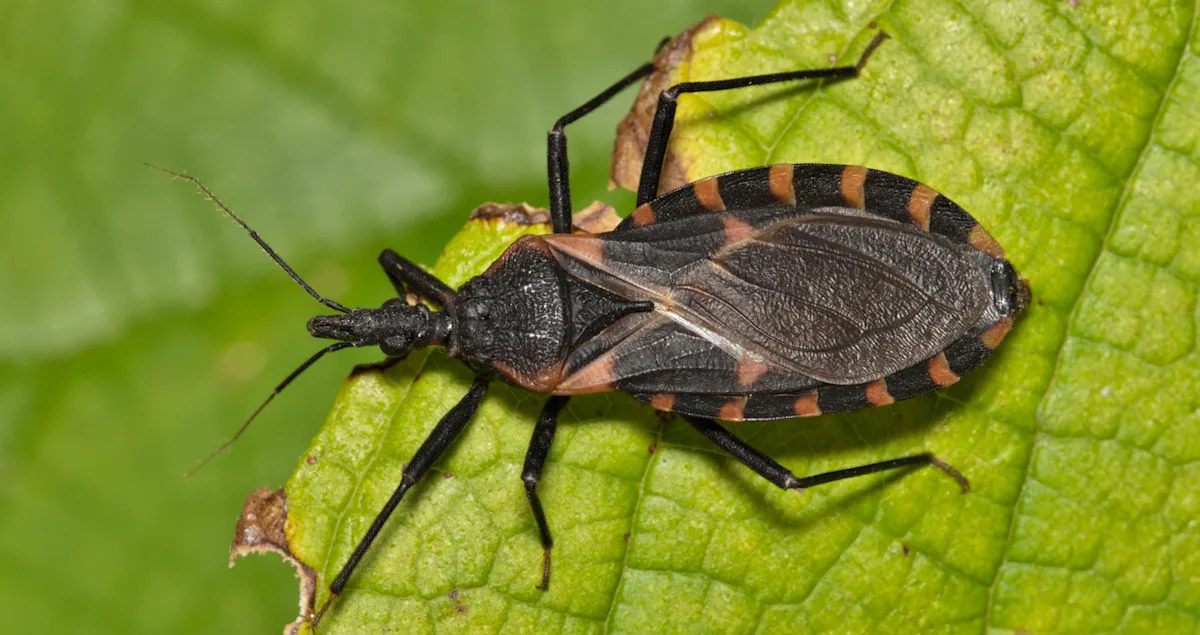A deadly, little-known parasitic infection known as Chagas disease, once considered a threat only overseas, may be endemic in the United States, researchers say in a new study.
Chagas disease is often called the silent killer because it can go undetected for years, even decades, before causing life-threatening complications. It is caused by a parasite carried by a group of blood-sucking insects commonly known as kissing bugs due to their tendency to bite people around the mouth.
The disease usually occurs in two phases: an immediate acute phase and a chronic phase, which often occurs much later. In the acute phase, infected people often show no symptoms. If present, they are usually mild and nonspecific, such as headache, fever, and muscle pain. During the chronic phase, which usually occurs 10 to 30 years after the initial infection, the parasites can begin to cause serious damage to the heart and digestive tract. As a result, about a third of patients develop serious cardiac abnormalities. Another 10% have digestive or neurological problems, according to World Health Organization.
The WHO estimates that more than 7 million people worldwide are infected with Chagas, and the disease causes 10,000 deaths each year. Most cases occur in Central and South America, where kissing bugs are common. In 2016, researchers rated that about 300,000 people in the United States have chronic cases of Chagas, but almost all contracted the disease in another country before coming here.
IN paper published this month, a group of experts argues that we should consider the disease a serious health threat even for those who never leave the country. They identified eight states (California, Arizona, Texas, Tennessee, Louisiana, Missouri, Mississippi, and Arkansas) with confirmed human cases of Chagas disease caused by local transmission. That's good reason to consider the disease endemic—that is, always present—in the United States, they argue.
“Recognizing the endemicity of Chagas disease in the United States is critical to achieving global health goals,” the authors wrote in the study.
Most states do not track Chagas cases, so the actual number of infections in the country is unknown, but researchers say there is reason to believe the disease is much more widespread than previously thought. Between 2013 and 2023, the Texas Department of State Health Services reported 51 cases of locally transmitted Chagas disease. During the same period, the state also reported more than 400 cases of the disease in dogs. Infected dogs have been found in 22 other states and Washington, DC.
Gabriel Hamer, an entomologist at Texas A&M University, said Los Angeles Times that known cases of Chagas likely represent “just the tip of the iceberg” of the actual spread of the disease.
The kissing bug species known to spread chagas has been found in 32 states, including all states in the southern half of the United States.
What you need to know
Fortunately, Chagas can be treated with antiparasitic medications if caught early. However, treatment becomes less effective the longer a person is infected.
“If we tested for it and caught it early, most patients could be cured,” said Dr. Salvador Hernandez, a cardiologist. NewsNation. “The problem is that we don't do this, and people end up dying or needing extremely expensive care, including organ transplants and surgery.”
Once Chagas becomes chronic, it cannot be cured with medications, but medications can help slow down the onset of the most serious complications, according to Mayo Clinic. In some cases, infected people may require a pacemaker, heart surgery, or even a heart replacement.
Trypanosoma cruzi is the causative agent of Chagas disease, transmitted by triatomide bugs. (Ed Reschke/Getty Images)
Identifying Chagas in its early stages is critical. Most of the symptoms that occur in the acute phase, if they occur at all, are general and can easily be attributed to typical viruses such as the flu or the common cold. These include fever, fatigue, body aches, headache, diarrhea and vomiting. However, there is one characteristic symptom known as sign of Romagna – swelling of the eyelid, which sometimes occurs when the parasite enters the body through the eye. Signs of chronic Chagas include heart and digestive problems.
Dogs are also often asymptomatic in the acute phase, although they sometimes have swollen lymph nodes, pale gums and stomach problems. During the chronic phase, dogs may experience heart problems, lethargy, and bloating.
In their study, the researchers argue that designating Chagas as an endemic disease will greatly improve our ability to “combat this neglected disease, which has been demonstrated to never be exclusively tropical.”








